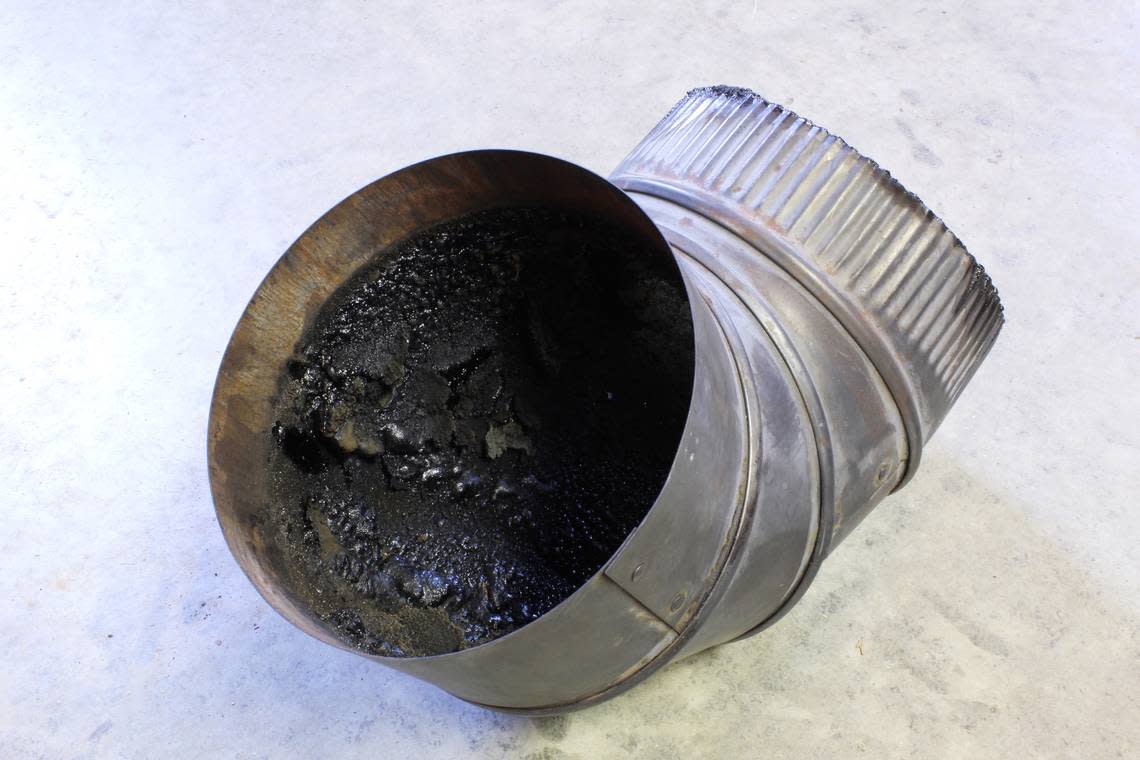Before using your chimney or fireplace, WA fire marshal urges a safety check first
Chimney fires can cause death or severe damage to your home if fireplaces or chimneys are not maintained properly, according to a press release from the Washington state fire marshal, Chad Cross.
As winter approaches and more Washington state residents are using their fireplaces and chimneys for the first time in months, it is important to inspect them properly for potential fire hazards to avoid accidents.
In the United States, there are over 22,000 fires each year on average related to home heating, and almost 50% of all heating-related fires take place in December, January and February, according to the Washington state fire marshal press release.
Here’s how you can stay safe this fall and winter while using your fireplaces and chimneys.
Why is fireplace carbon monoxide a concern?
Chimneys can also be deadly by producing carbon monoxide through malfunctions.
On average, about 170 Americans die every ear from carbon monoxide produced by non-automotive products, such as furnaces, room heaters, and fireplaces, according to the U.S. Consumer Product Safety Commission.
Carbon monoxide is a gas you cannot see or smell but it can become deadly in minutes. In Washington state, 20 people die each year from carbon monoxide, on average, according to the Washington State Department of Health.
As carbon monoxide can easily be produced by household appliances, installing a carbon monoxide detector for your home could be lifesaving.
How do chimneys and fireplaces start fires?
Cleaning your chimney and fireplace properly is a simple way to avoid fires.
“The leading factor contributing to chimney fires is the failure to clean, mainly the creosote that builds up in the chimney… if it builds up in sufficient quantities, and the internal flue temperature of your chimney is high enough, the result could end up being a chimney fire,” the Washington state fire marshal press release states.
Creosote is dark-colored material left on your chimney or fireplace walls after use, and is highly flammable.

Chimney fires rapidly spread and can easily become full-fledged house fires, according to the Chimney Safety Institute of America. If you have a fire in your chimney, the chimney’s tile liner could expand and crack which then allows fire to spread through the attic, walls and to the rest of the home.
How to prevent chimney and fireplace fires
The Office of the Washington State Fire Marshall offers a few tips to avoid dangerous fires:
▪ Make sure your wood or coal stoves are located at least 36 inches away from your walls.
▪ Keep flammable and combustible materials away from the chimney and fireplace, and keep matches and lighters out of children’s reach.
▪ Have your chimney and fireplace inspected every year by a chimney professional.
▪ Install carbon monoxide detectors in your home.
▪ Make sure your chimney has a cap and a liner.
▪ Burn only well-seasoned hardwoods.
▪ After an earthquake, storm, flood or lightning storm, have your chimney inspected for damage on its exterior and interior.
The City of Vancouver, Washington also offers advice to avoid fires:
▪ Close glass fireplace doors when the fire is out to keep the chimney air out of the room.
▪ To avoid creosote buildup, keep air inlets on wood stoves open, do not restrict the air supply to fireplaces and make sure the fire gets enough air to complete combustion.
▪ Never burn trash or cardboard.
▪ Do not use flammable liquids to start a fire.
▪ Do not burn soft or moist wood as it accelerates the buildup of creosote.
▪ Extinguish your fire before going to bed or leaving your home, never leave a fire unattended in a fireplace.
▪ When disposing of ashes, let them cool completely and place them in a tightly sealed metal container at least 10 feet away from your home and buildings. Ash should be saturated with water to ensure it will not be flammable.
▪ Install smoke alarms on every level of your home and test the alarms monthly. Change the batteries every year.
▪ Remove branches around your home that are near your chimney or vents and remove debris from your roof such as leaves and pine needles.
▪ Do not stack firewood outdoors close to your home. Firewood should be at least 30 feet from buildings.
What to do if your chimney is on fire
The Chimney Safety Institute of America offers tips of what to do if you have a chimney fire:
▪ Get everyone out of your home and a safe distance away and call 911 immediately.
▪ Close all doors behind you when you leave your home in order to cut off air from getting to the fire and causing it to spread.
▪ Keep a Chimfex chimney fire extinguisher in your home to control the fire until the fire department arrives to your home.
How to avoid carbon monoxide poisoning from your chimney
Most carbon monoxide poisoning takes place during the fall and winter months, according to the Washington State Department of Health.
Carbon monoxide has many sources, such as automobiles, chain saws, ovens, gas stoves, burning charcoal and wood, furnaces and tobacco smoke, according to the department.
The health department offers tips to avoid carbon monoxide poisoning in your home:
▪ Do not burn charcoal in your fireplace.
▪ Never burn anything in a fireplace or stove that is not vented, and do not use unvented fueled heaters.
▪ Never use a gas or charcoal grill in an enclosed space, such as your home, garage, tent or camper.
▪ Do not use a gas oven or gas range to heat your home.
